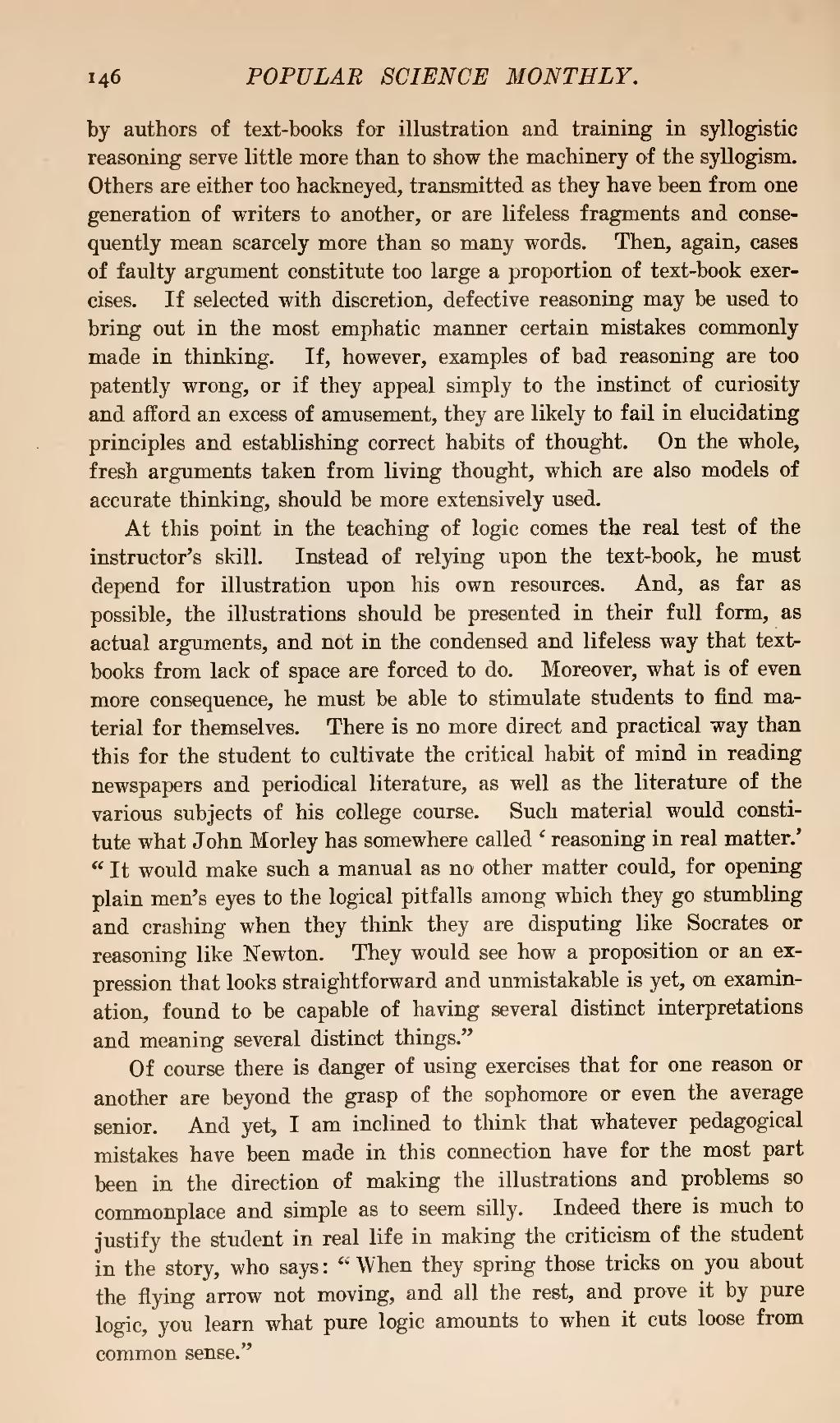by authors of text-books for illustration and training in syllogistic reasoning serve little more than to show the machinery of the syllogism. Others are either too hackneyed, transmitted as they have been from one generation of writers to another, or are lifeless fragments and consequently mean scarcely more than so many words. Then, again, cases of faulty argument constitute too large a proportion of text-book exercises. If selected with discretion, defective reasoning may be used to bring out in the most emphatic manner certain mistakes commonly made in thinking. If, however, examples of bad reasoning are too patently wrong, or if they appeal simply to the instinct of curiosity and afford an excess of amusement, they are likely to fail in elucidating principles and establishing correct habits of thought. On the whole, fresh arguments taken from living thought, which are also models of accurate thinking, should be more extensively used.
At this point in the teaching of logic comes the real test of the instructor's skill. Instead of relying upon the text-book, he must depend for illustration upon his own resources. And, as far as possible, the illustrations should be presented in their full form, as actual arguments, and not in the condensed and lifeless way that text-books from lack of space are forced to do. Moreover, what is of even more consequence, he must be able to stimulate students to find material for themselves. There is no more direct and practical way than this for the student to cultivate the critical habit of mind in reading newspapers and periodical literature, as well as the literature of the various subjects of his college course. Such material would constitute what John Morley has somewhere called 'reasoning in real matter.' "It would make such a manual as no other matter could, for opening plain men's eyes to the logical pitfalls among which they go stumbling and crashing when they think they are disputing like Socrates or reasoning like Newton. They would see how a proposition or an expression that looks straightforward and unmistakable is yet, on examination, found to be capable of having several distinct interpretations and meaning several distinct things."
Of course there is danger of using exercises that for one reason or another are beyond the grasp of the sophomore or even the average senior. And yet, I am inclined to think that whatever pedagogical mistakes have been made in this connection have for the most part been in the direction of making the illustrations and problems so commonplace and simple as to seem silly. Indeed there is much to justify the student in real life in making the criticism of the student in the story, who says: "When they spring those tricks on you about the flying arrow not moving, and all the rest, and prove it by pure logic, you learn what pure logic amounts to when it cuts loose from common sense."

